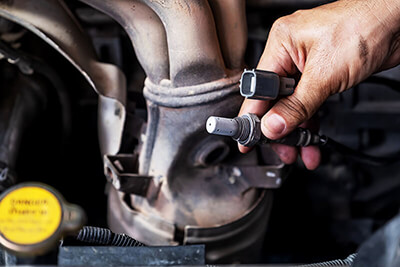Why Do Failed Oxygen Sensors Need to Be Replaced?
When functioning properly, oxygen sensors monitor the levels of unburned oxygen in exhaust, sending signals to a vehicle's PCM or computer if the fuel mix is too rich (not enough oxygen) or too lean (too much oxygen). If an oxygen sensor is sluggish or failing, the computer can't properly set and adjust the air/fuel ratio, leading to lower fuel economy, increased emissions, and damage to vehicle components. When an oxygen sensor completely fails and stops sending signals to the PCM, a vehicle defaults to "open loop mode", sending more fuel to the engine to protect against over-lean conditions, creating higher levels of unburned fuel. Not only does this waste fuel and increase emissions, but also adds stress to the catalytic converter. The resulting elevated temperatures in the oxidation catalyst can lead to a melt-down and destruction of the catalytic converter (a $900-$1600 repair).

While a check engine light may indicate a failed oxygen sensor, what are the preemptive signs of a failing sensor? Rough idle, reduced fuel economy, loss of engine power and sluggish engine operation. According to the EPA, replacing a failing oxygen sensor can improve fuel economy by as much as 40%. Replacing a failing oxygen sensor at the earliest signs of trouble prevents future headaches and a higher repair bill.
